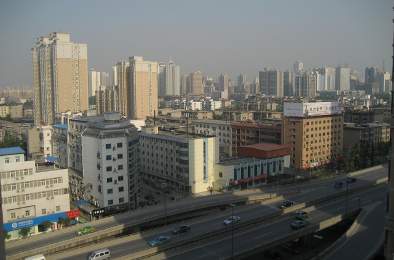Half of humanity now lives in cities and every second the urban population grows by two people. In Africa and Asia, the urban population will double between 2000 and 2030. 38% of the growth is represented by expanding slums, while city populations are increasing faster than city infrastructure can adapt.
Urbanization is very much about infrastructure. A rapidly growing population puts stress on for a city’s ability to provide water and sanitation. The key principles of IWRM are not only important to guide implementation of good water governance, but they are also applicable to water infrastructure.
A catchment perspective is a vital starting point for analyzing the relationship between water supply and sanitation and other aspects of water resources management. The benefits and costs of water infrastructure have social and environmental implications that are not limited to a single sector. In many areas with strong competition for limited resources – including catchments with large urban populations, rural areas with high population densities, and areas with high demand for irrigation and other non-domestic uses –water supplies can no longer be improved solely through reliance on the development of new sources and infrastructure.
The online GWP ToolBox www.gwptoolbox.org promotes and shares approaches on how to manage water resources in an integrated way. A new tool in the ToolBox deals with the water infrastructure implementation and IWRM.
There are a number of case studies and references in the ToolBox that illustrate experiences of water and sanitation provision implemented in different parts of the world. The newest contribution comes from Central Asia and Southern CaucasusOther management tools critical to WSS in the context of IWRM are available in C3 Efficiency of Water Use, addressing the complex issues of management of demand and supply.
Background Papers
GWP Technical Committee Background Papers dealing with sound water supply and sanitation sector include:
- Background Paper No. 13: Managing the other side of the water cycle: Making wastewater an asset
- Background Paper No. 11: Urban Water and Sanitation Services: An IWRM Approach
- Technical Brief No. 4: Taking an integrated approach to improving water efficiency
All Technical Committee Background Papers can be found in various languages here.
More GWP resources on WSS
- Regional Review: Water Supply and Sanitation in the Central Asia and Southern Caucasus (GWP CACENA, 2009)
- Financial flows and affordability in water resources management in the CEE region (GWP CEE, 2003)
- Sustainable Sanitation in Central and Eastern Europe: Addressing the Needs of Small and Medium-Size Settlements (GWP CEE, 2007)
- Financing Water Infrastructure and Services (EUWI/GWP, 2007)
- Financing Water for all; Report of the World Panel on Financing Water Infrastructure (WWC/GWP, 2003)
- Drinking Water and Sanitation Experiences with and IWRM approach in El Salvador (GWP CAM, 2010)
- Drinking Water and Sanitation Experiences with an IWRM approach in Nicaragua (GWP CAM, 2010)
- Drinking Water and Sanitation Experiences with an IWRM approach in Guatemala (GWP CAM, 2010)
- Drinking Water and Sanitation Experiences with an IWRM approach in Honduras (GWP CAM, 2010)
- Recycling realities: Managing health risks to make waste water an asset (Water Policy Brief, GWP/IWMI, 2006)
Photo by Li Axrup, GWP

